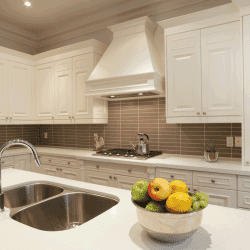Is it true that a kitchen island needs an outlet? You remember reading it somewhere and now that it's finally time to get the island of your dreams, you need to know. We've checked in with experts and home building codes to find out the answer for you in this post.
If your kitchen island is built-in and is stationary, it does require one electrical outlet. An electrical inspector will not sign off on your kitchen build without it. However, if your island is more like a piece of furniture, a table, or a rolling butcher block, it does not require an electric outlet.
Let's take a look at these two types of islands and why these rules are in place. We'll also discuss where an outlet should be placed on a kitchen island, if it needs to be a GFCI plug, why you need an outlet on a kitchen island, and how you can hide the outlet if you don't want it to be visible. Please, keep reading for all of the information.
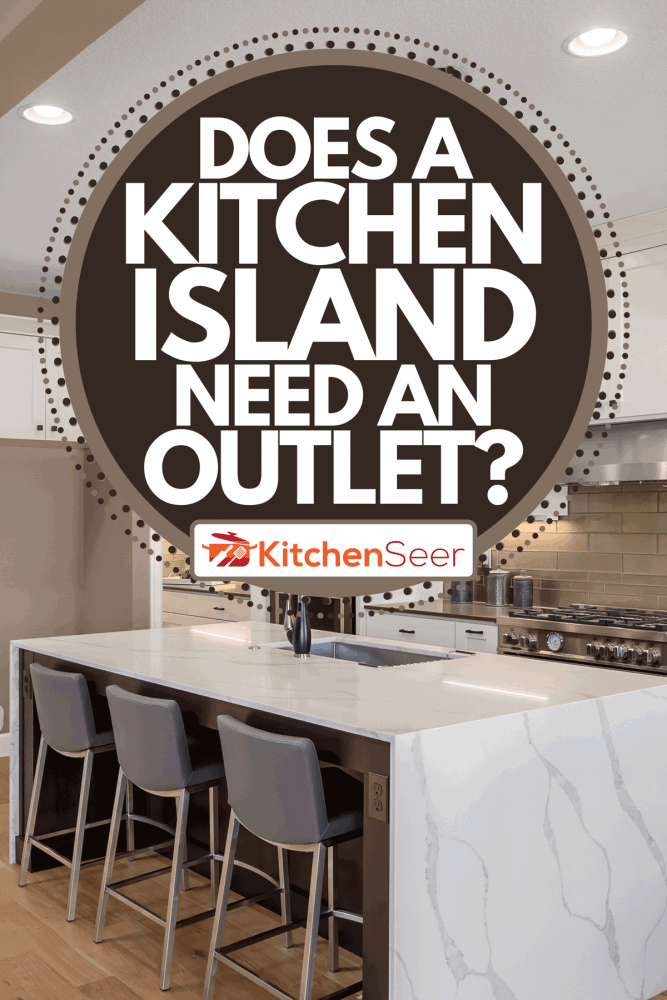
Do Kitchen Islands Need An Outlet?
Kitchen islands are a much-loved feature in today's open-concept home plans. They provide extra storage and seating. They also create a visual delineation between the kitchen space and the living or dining space. It's no wonder islands are so requested in kitchen renovations. Though many islands are fixed, some are movable. Does each type require the same thing when it comes to an electrical outlet?

Rolling Or Non-Fixed Kitchen Islands Don't Require An Outlet
Many islands can be bought as an add-on to your existing kitchen. Sometimes this might be a table with legs built at island height. Or it might be a butcher block island to give you extra chopping space. The good news is these types of portable kitchen islands do not have to have an electrical outlet per the electrical code.
Table-Style Island
This table-style island is a taller height than your kitchen table which makes it convenient for prepping food. A standard kitchen table is about 28-30 inches tall. This island is 36 inches tall. It's portable and can be moved around the kitchen. Because of this, this type of island does not require an electrical outlet.
Click here for this on Amazon.
Rolling Kitchen Island
Here's another great style of kitchen island that doesn't require an electrician to install an outlet. This handy island features cabinets, drawers, a spice and towel rack, extra prep space, and it comes on locking casters that allow you to roll it where you need it. Then lock it in place. Your electrical inspector will find nothing at fault with this type of island, even if it doesn't have an outlet.
Click here for this on Amazon.
Butcher Block Island
If you want something with the solidity and the heft of a larger island, consider butcher block. This solid top is 10 inches thick. And though it may be heavy, it is still technically a piece of furniture that is moveable so won't require an outlet to make it a permanent part of your kitchen.
Click here for this on Amazon.
Fixed Islands And Electrical Outlets
Fixed kitchen islands are built into place. There's no way of moving them. These islands are part of a permanent cabinet system for the kitchen and often have countertops to match or complement the other countertops in the kitchen. These types of islands require an electrical outlet per building codes.
Why Do You Need An Outlet On A Fixed Kitchen Island
The main reason you need an outlet on a fixed kitchen island is that it's required by the NEC (National Electrical Code). Without it, you won't be following building codes for your kitchen. If your island is uninterrupted and is larger than 12 inches by 24 inches, you'll need one outlet. However, if you have a range or sink splitting your island into two sections, you'll actually need two outlets.
The thought process behind this requirement has to do with cords. If you are using a small appliance on your island and need to run that cord across to a wall outlet, you're creating tripping and sparking hazards.
Does Your Kitchen Island Outlet Need To Be A GFCI Outlet?

GFCI stands for Ground Fault Circuit Interrupter. In plain English, this means that the outlet will trip when the outlet feels an imbalance or excess flow of energy. Having GCFI plugs can keep your fuses from tripping and will keep you safe at your outlets. These outlets are recognizable because of their trip and reset buttons in the center of the two plug-in spots.
Because kitchens and bathrooms mix water and electricity, GFCI plugs are a requirement. GFCI protection is required for all 15A and 20A, 125V receptacles that supply kitchen countertop surfaces, including islands.
Where Should An Outlet Be Placed On A Kitchen Island?
There is no required place to put your outlet on the island as long it's there. The most traditional spot is simply on the side of the island, just below the countertop.
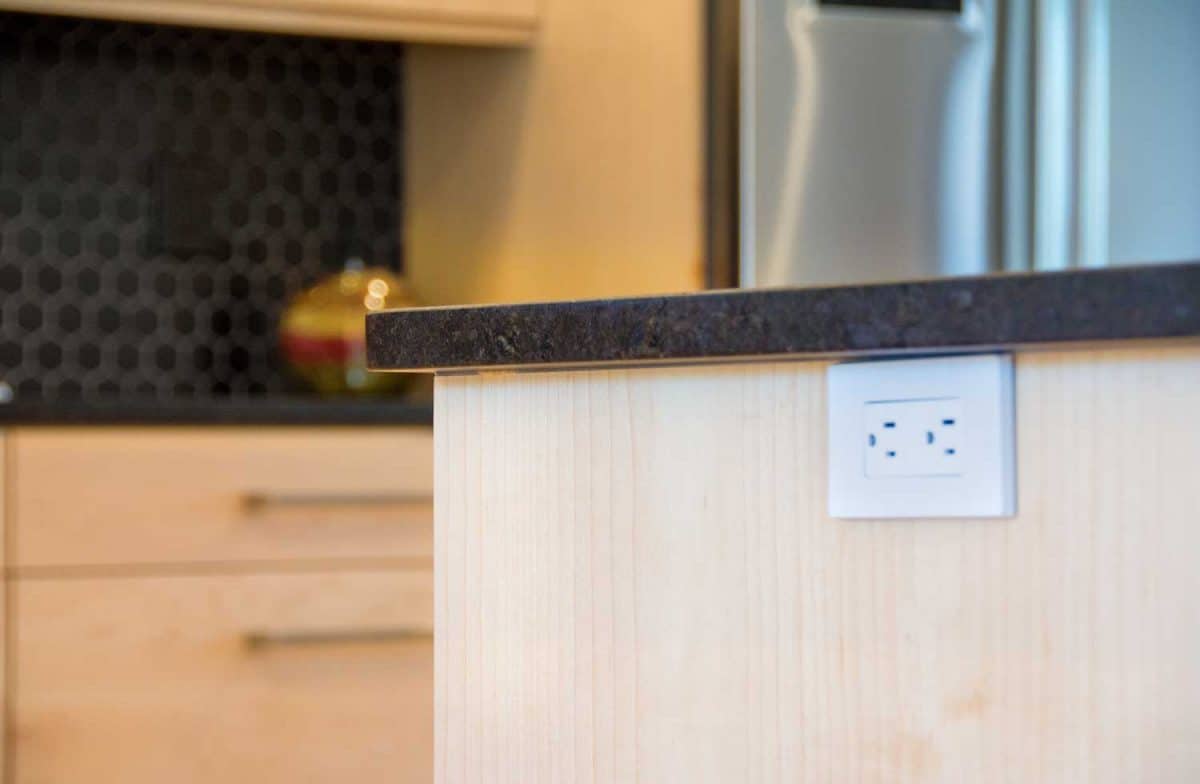
If you have a cubby or some out-of-the-way spot, you may want your outlet there. Though this may be less practical if you plan on actually using your outlet for something other than your vacuum cleaner.
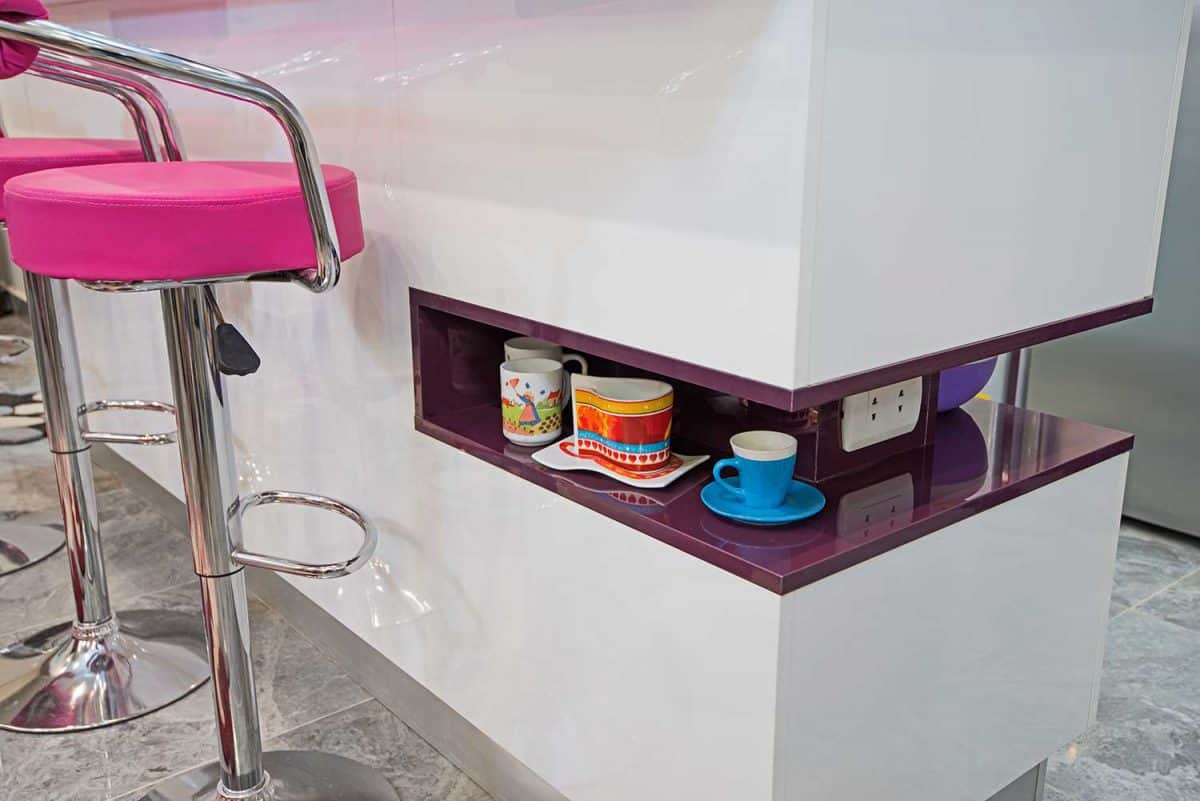
If you're a baker, and primarily use your island for bread, pastries, and cookies, you may consider a mixer cabinet. These handy inserts raise your blender up when needed and if you place your outlet behind it, you can keep it permanently plugged in.
How Do You Hide An Outlet On A Kitchen Island?
You understand an outlet is necessary but perhaps you don't want one that shows. Or maybe you have gorgeous waterfall-style countertops and an outlet is going to break the flow. Is there a way to strategically hide your kitchen outlet? There are a number of different things on the market that can help you with this. Perhaps the most common is a pop-up outlet. This style of outlet raises up out of the top of the island with a simple press of your fingertips.
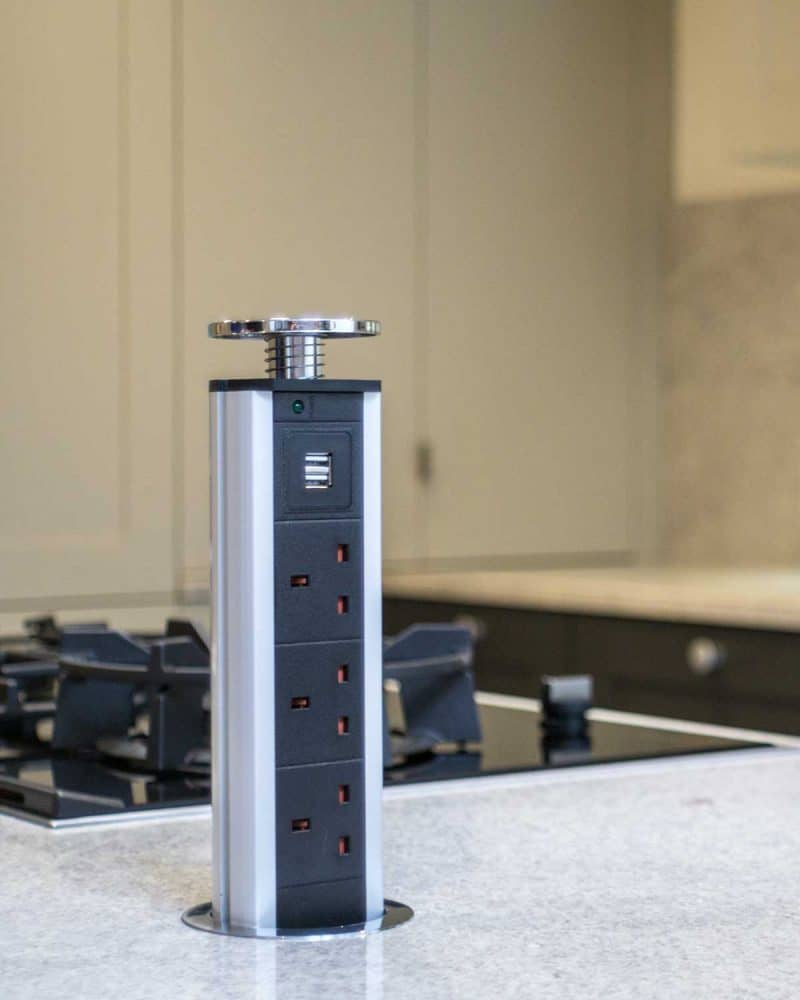
Another clever way of hiding your outlet is to conceal it in a drawer or create a false drawer front that swings down to reveal the outlet.
Island legs, if you have them, can also be an excellent hiding spot for a kitchen outlet. These show how the outlet can be tucked into the upper part of the leg with only the face of the outlet shown.
We have more on hidden outlets in kitchen islands here: Where To Put Outlets In A Waterfall Island
To Call The Electrician Or Not
As you've seen, there are ways to get around calling an expensive electrician for that required island outlet. If your kitchen can work with a moving or non-fixed island, then you won't need this extra step. However, if you're renovating or building new and a large island is part of the design, an outlet is necessary per the code.
If you enjoyed this post here at KitchenSeer.com, please check out a few of our others below:
How Tall Is A Kitchen Island? [Dimensions Explored]
Kitchen Island Vs Kitchen Peninsula – What Are The Differences?




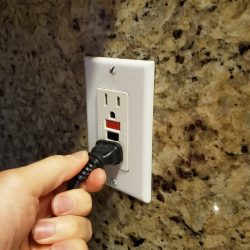


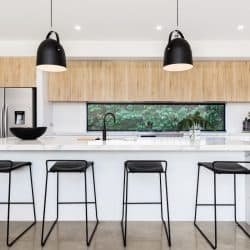
![Picture of modern black and white kitchen with kitchen island, How Tall Is A Kitchen Island? [Dimensions Explored]](https://kitchenseer.com/wp-content/uploads/2021/06/Picture-of-modern-black-and-white-kitchen-with-kitchen-island-250x250.jpg)
